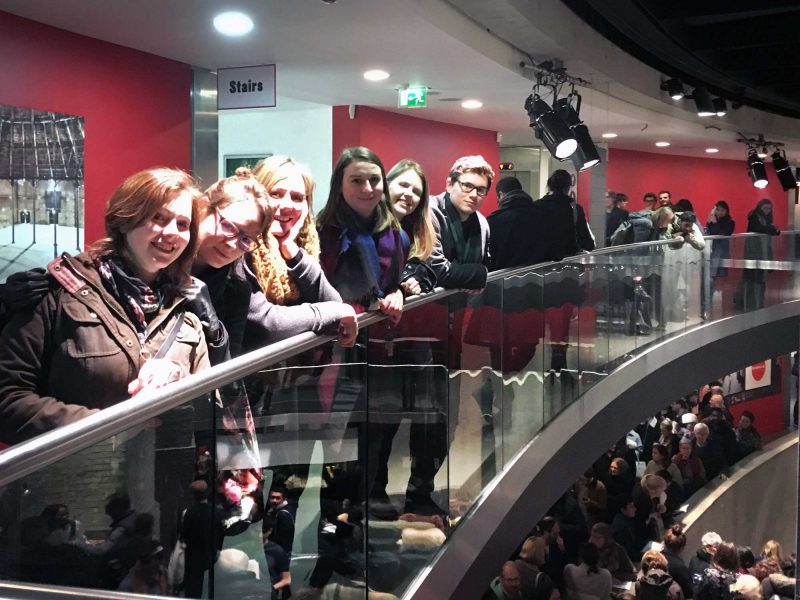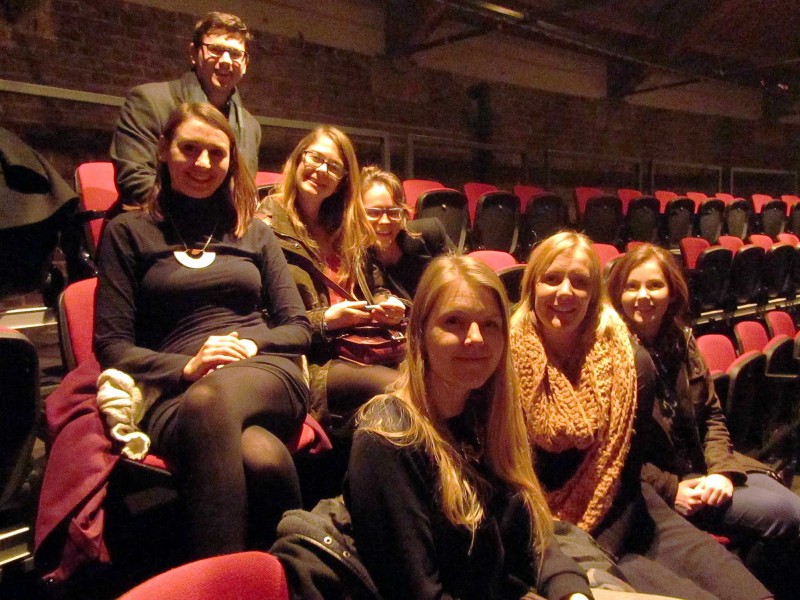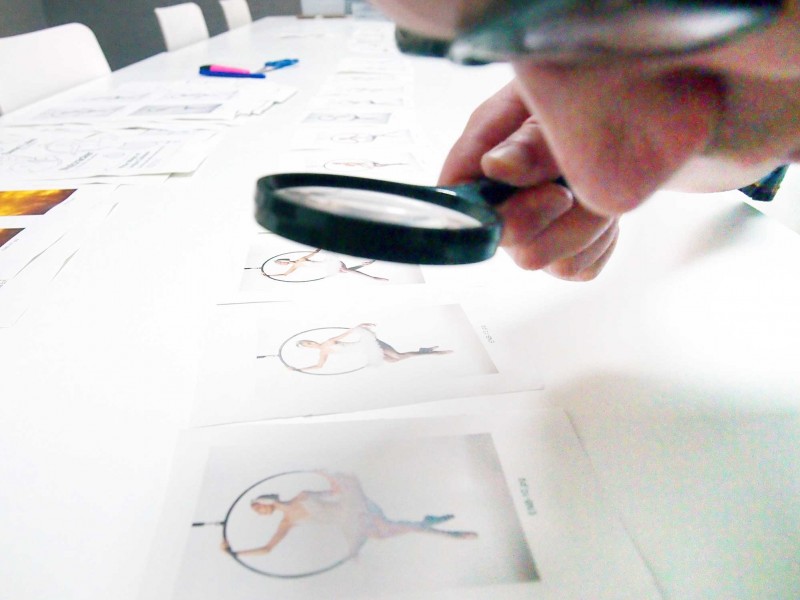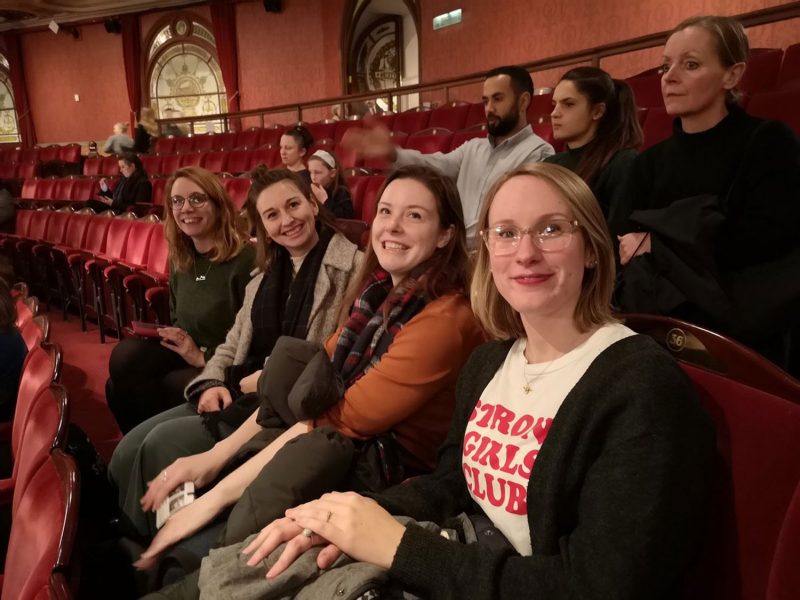Akram Khan’s influences from Kathak and contemporary offer a striking take on the classic romantic ballet, beautifully performed by the cast of English National Ballet.
Akram Khan’s Giselle at Sadler’s Wells
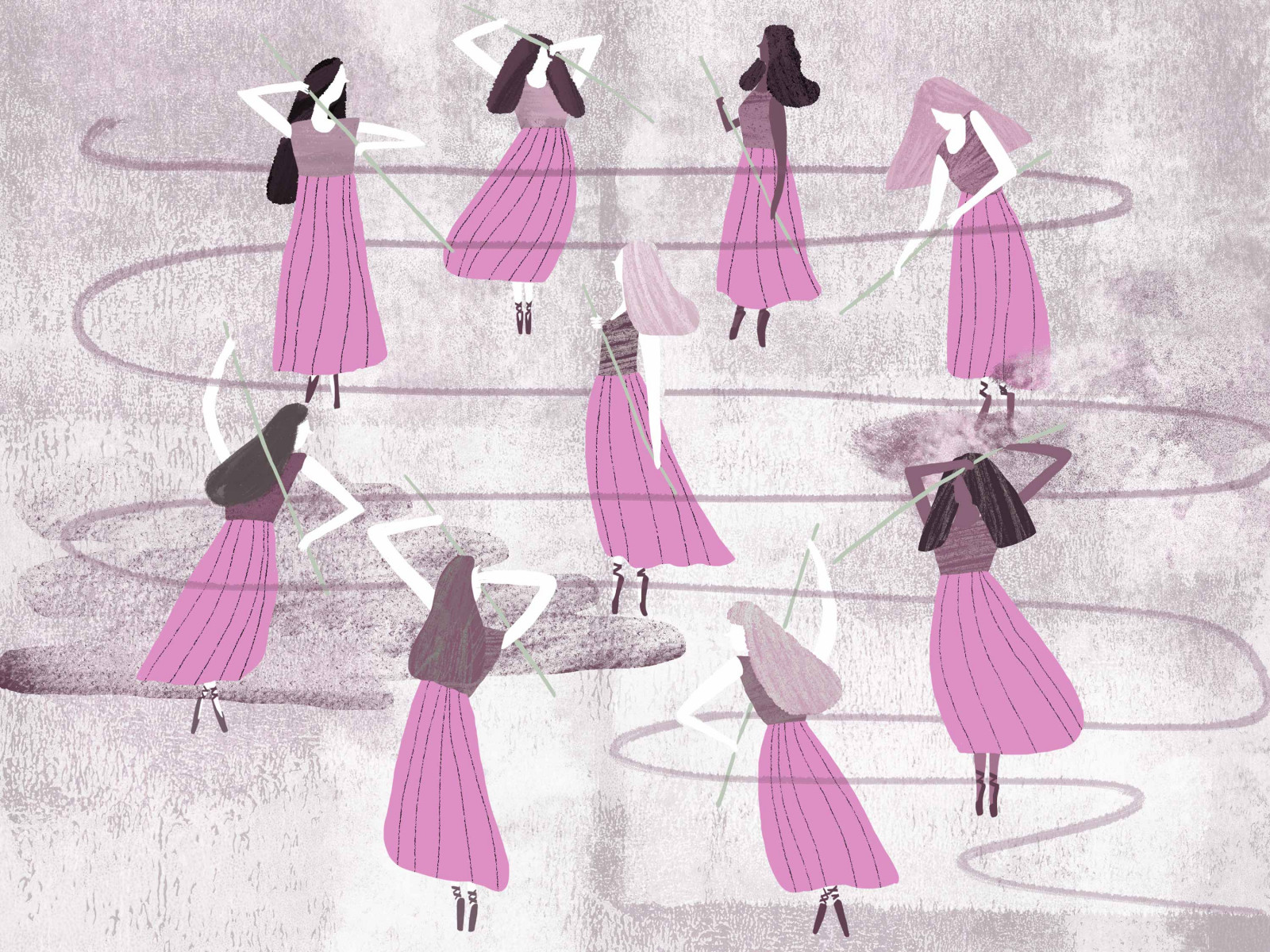
November’s Cog night was Giselle, the much anticipated collaboration between renowned choreographer Akram Khan and English National Ballet. We bought our tickets back in July and the office had pretty much been buzzing with excitement since then. The rave reviews, for the pre-London national tour, only fuelled the excitement.
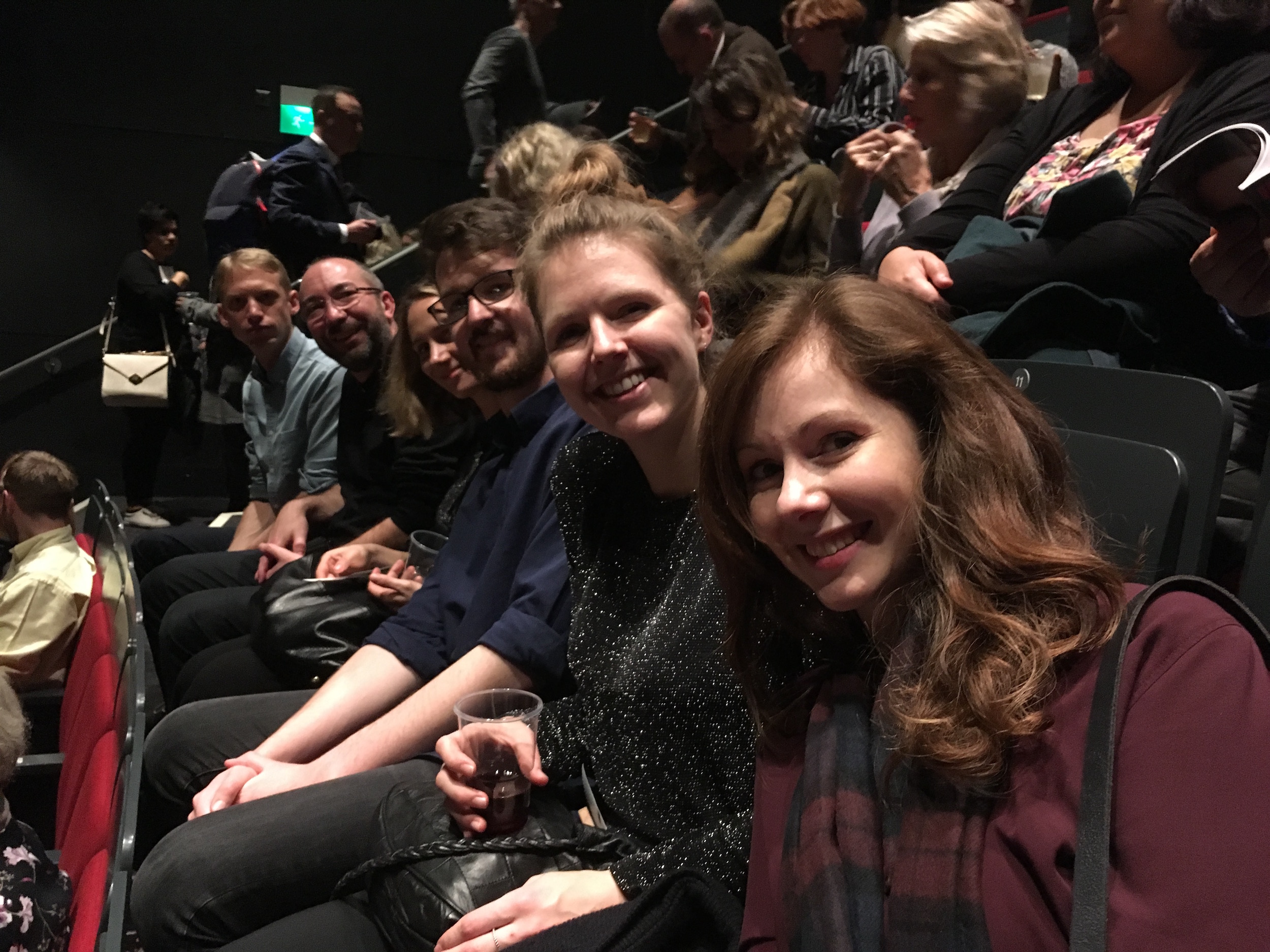
The team all excited for the show
The classic Giselle is the epitome of a romantic ballet, centred around love, betrayal, mysticism and eventually forgiveness. Akram Khan’s version retains those themes but brings the story forward in time, away from the 19th century harvest time to a more proximate reality. His contemporary revival of the classic turns the peasants to migrant factory workers and the noble folk to the rich landlords clad in absurdly extravagant garb made by said factory workers. The two starkly contrasted worlds are separated by a literal wall, highlighting the division and imbalance of wealth in our globalised modern society.

We weren’t the only ones at Sadler’s Wells
The monolithic wall is used to portray the class barrier in the first act, with Giselle and the other exiled migrant workers trying to push it away, looking for a way into the life on the other side. Albrecht, Giselle’s lover, in a series of beautiful duets tries desperately to get her away from the wall, he doesn’t want her to know that he himself is a part of the wealthy world beyond it. But Giselle is also loved by Hilarion, who is adept at crossing the border and arranges a visit from the wealthy landlords in order to expose Albrecht’s lies. When confronted with the choice between his life of privilege and the outcast life with Giselle, Albrecht chooses to return to the other side of the wall, betraying Giselle.
In the second act the wall represents an industrial hell of sorts, the stage becomes the abandoned factory haunted by the ghosts (wilis) of women who’ve died serving the greed of modern society. Giselle joins them but is desperate to break the circle of violence and ends up forgiving Albrecht and releasing him from the grips of the wilis.
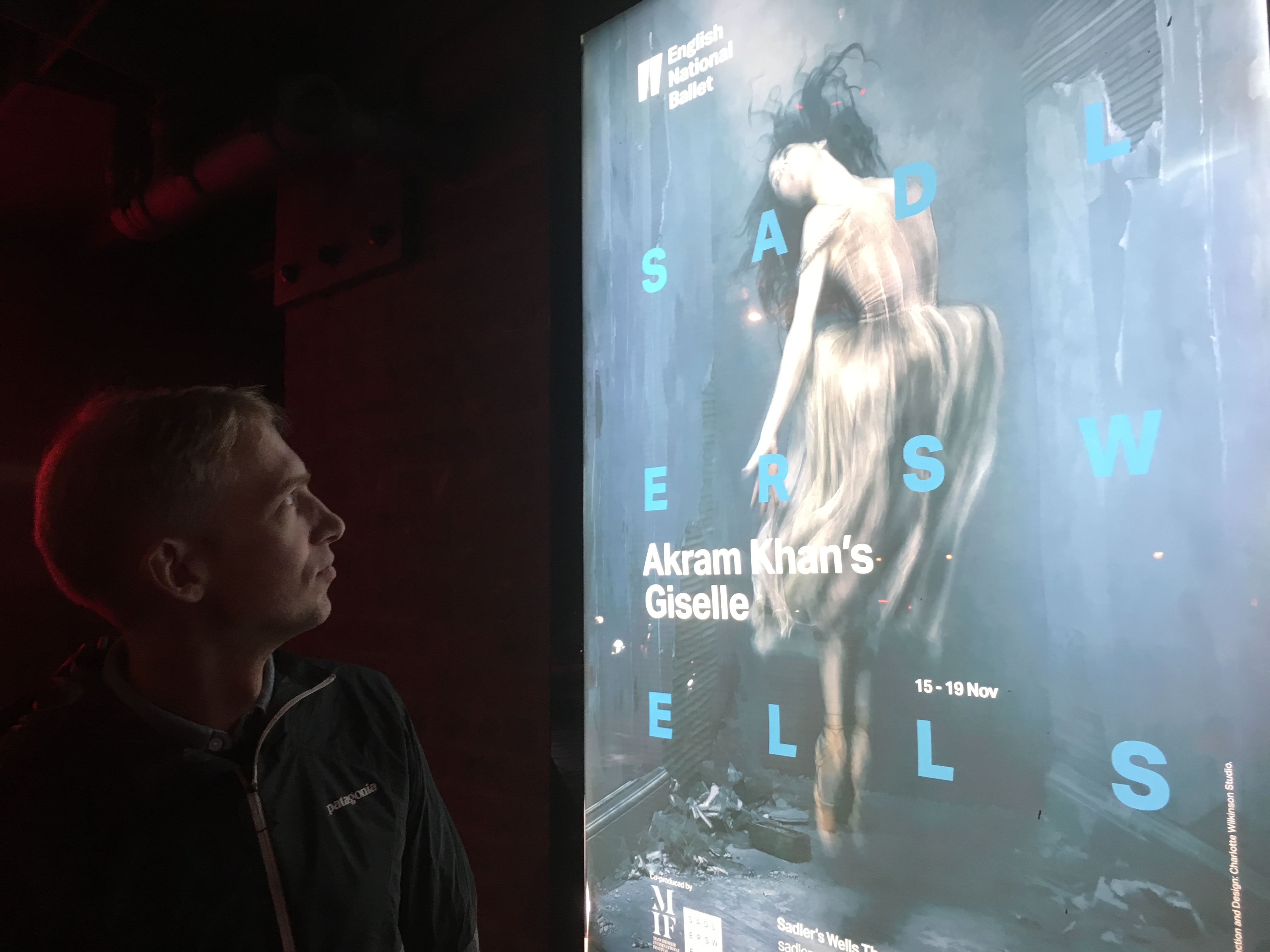
Matt admiring the poster
Vincenzo Lamagna’s dark and electrifying rendering of Adolphe Adam’s original score is gripping but just as arresting is the use of absolute silence, where all you can hear is the footwork of the dancers. Footwork which is absolutely stunning, the use of pointe for the ghosts in the second act again pays homage to the romantic origins of the ballet bringing in ethereal weightlessness, a sense of floating. Coupled with their warrior staves they become wickedly beautiful and equally dangerous.
Akram brings his influences from classic Kathak and his experience from contemporary dance but still very much keeps a sense of ballet, creating a beautifully elegant fluidity of expressive gestures, contortionist movements and some classic arabesques. The dancer’s of English National Ballet perform Khan’s choreography with gripping precision. Tamara Rojo’s Giselle is curious, innocent and beautiful, her duets with James Streeter’s Albrecht delicate and captivating. A favourite of mine was possibly the primal fight-like duet between Albrecht and the sly Hilarion, danced by Cesar Corrales, alluring in its animalism.

Becca and Melissa content after a fantastic show
Akram Khan’s reimagining of the classic is stunningly performed by ENB and combined with the striking score, costumes and set design makes this contemporary ballet a must see.
giselle.ballet.org.uk
www.ballet.org.uk
www.akramkhancompany.net



